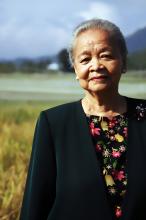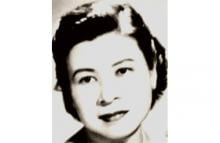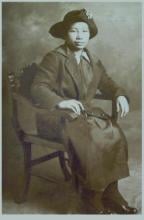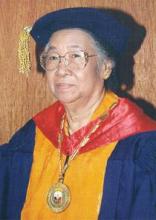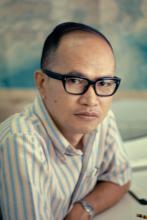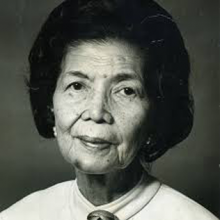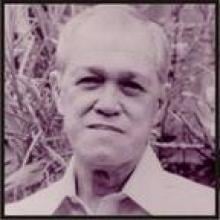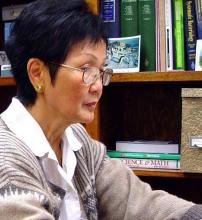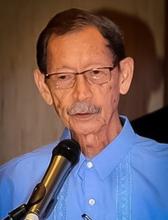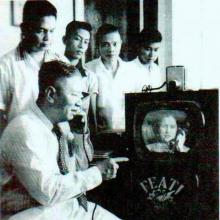Philippines
News
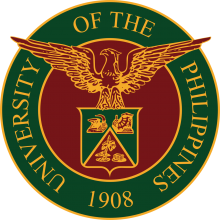
30 Jul 2007
Researchers in the Philippines have revealed that a fast and low cost photographic method is just as effective as the more expensive videographic method in assessing the condition of coral reef benthic communities.

25 Jul 2007
A microscope imaging technique for visualizing and analyzing semiconductor integrated circuits developed by a team of scientists from the University of the Philippines’ National Institute of Physics was awarded a patent by the United States Patent and Trademark Office.

06 Jul 2007
The latest from Rice Today, the magazine of the International Rice Research Institute (IRRI)

20 Jun 2007
The Philippine Intellectual Property Office issued last March 9, 2007 the utility model patent for the “Seaweed-based Air Freshener Gel” of Dr. Nemesio Montaño and Ms. Banaag Glorioso-Lajera. This utility model uses seaweeds as base material instead of the usual base in air freshener gels, which is carrageenan.

08 Jun 2007
An exciting new program just launched in Asia is encouraging some of the world’s best and brightest young scientists to consider careers helping developing nations, instead of taking jobs focused on the developed world.

11 May 2007
The publication “Finding the Missing Women: Trade Issues from a Gender Perspective” tackles the effects of trade liberalization and promotes gender perspective in its analysis in order to recognize the roles and needs of women in the industry.

11 May 2007
A study shows that the traditional fish/shrimp paste condiment, or bagoong, of the Philippines contains the beneficial omega-3 fatty acids. In its analysis, it was found that among the samples of bagoong, shrimp paste has the highest omega-3 content.

07 May 2007
A major international initiative is being launched to try to boost the income of the world’s millions of poor rice farmers and at the same time provide consumers with more nutritious, better tasting food.

04 May 2007
A faster and more effective way of applying titanium nitride coating on industrial tools developed by Dr. Henry J. Ramos of the University of the Philippines’s National Institute of Physics (UP-NIP) was awarded a Taiwan Patent on March 16, 2007.

02 May 2007
A study presents the habit formation utility function, particularly, the external habit model, as a resolution to the equity premium puzzle encountered in the estimation of the Consumption Capital Asset Pricing Model (C-CAPM).

26 Apr 2007
Los Baños, Philippines – World-class scientific facilities continue to play an increasingly important role in helping poor nations overcome poverty and food insecurity as well as handle new challenges such as the impact of climate change.

04 Apr 2007
Significant Finds from a Decade of Philippine Archaeological Research: 1996-2006 including the dating of early man fossils from the Tabon Caves, networking with foreign archaeologists in the SEA region, The Cagayan Valley Project and Hizen porcelain exports from Japan.

02 Apr 2007
Efforts by Indonesia to avoid food shortages by increasing its rice production have received an important boost with the signing of a new agreement to help the nation’s millions of poor rice farmers with new technologies.

15 Mar 2007
Three cultural texts from Japan, which were produced during the economic depression in the 1990s, have been found to emulate the state of the Japanese society during the period of adversity and social instability.

15 Mar 2007
Verbal and nonverbal interaction strategies mothers use with their children greatly affect the development of the children’s speech style and communication skills.

14 Mar 2007
The duyuy nga traki or the “narrative chants” of the Dulangan Manobo of Mindanao, Philippines use elements of nature to symbolize the historical, cultural and political experiences of the Manobos during a certain time and place.

14 Mar 2007
Three articles from the latest issue of Humanities Diliman of the University of the Philippines, Diliman analyze common knowledge in language, arts and society in the Philippines.

14 Mar 2007
Batek or tattoos were known to signify headhunting and bravery during the early 16th century in the Philippines. However, it has been found that these intricate designs have other functions in the culture of the native Filipinos other than symbolism of a man’s bravery.

14 Mar 2007
According to Ligaya Fernando-Amilbangsa, author of Ukkil, art in the Sulu Archipelago, South of the Philippines, is found everywhere in different forms. It is passed on by self-taught artists rather than taught in institutions. Artistic creations are better kept than sold for those creations express the creators’ feelings and satisfy their souls.

28 Feb 2007
Los Baños, Philippines – The important role, and impact, of women in rice research has been highlighted with the awarding of the L'Oréal-UNESCO Women in Science awards for 2007

23 Feb 2007
The latest issue of Humanities Diliman, Volume 3, Number 1 is now available. The papers include An Analysis of Mother-Child Interaction, Traditional Tattoos and Identities, Visual Arts of the Sulu Archipelago, The Wind-up Bird Chronicle and more

23 Feb 2007
The National Institute of Physics, University of the Philippines (UP) has miniaturized the Oblation (UP’s trademark) as part of its project on micro-fabrication of functional micro-devices using non-linear multi-photon absorption. The research project aims to use micro-structures as components in an integrated miniaturized laboratory.

20 Feb 2007
Research on detection of microscopic defects in integrated circuits at the National Institute of Physics, University of the Philippines has been selected by Optical Society of America as one of the most exciting to emerge in 2006.

19 Feb 2007
The papers include - And God Walks in the Suburbs; A Diasporic Perspective of Filipino Nurse Migration to the United States; Globalization of Care and the Position of the Filipino Workers; Spectacles of Masculinity and the Commerce of Men’s Bodies

30 Jan 2007
These three papers examine the role of the church in the lives of Filipinos living in Japan and the rest of East Asia.

29 Jan 2007
The latest issue of Science Diliman, Volume 18, Number 1 (January-June 2006), is now available.

24 Jan 2007
On the occasion of the recent launching of the book Fabián de la Rosa and His Times, the Fabián de la Rosa (1869-1938) Retrospective Exhibition is extended until 28 January 2007. Opened last 7 September 2006, the exhibition is a tribute to de la Rosa's great contribution to Philippine art.

23 Jan 2007
These papers give some perspectives on migrant women and the experience of Filipinas in Korea and the case of a Filipino community in Nagoya, Japan, the 3rd paper discusses issues of engaging with Filipinos abroad.

22 Jan 2007
Architecture and urbanism combined with rituals of civility and governance during the American colonization of the Philippines replaced hostile strategies in attaining native obedience to the colonial state.

19 Jan 2007
Besides the finding that Filipinos are generally comfortable in communicating, a study confirms that in Filipino culture, communication is collectivistic, family-oriented, highly contextual, and hierarchical.
Events
Sorry, no events coming up for this topic.
- « first
- ‹ previous
- 1
- 2
- 3
Researchers
Sorry, no researchers coming up for this topic.
Giants in history
Filipina sociologist Gelia Castillo (1928 – 2017) pioneered the concept of “participatory development,” (which calls for development projects to engage with local communities), and studied the impacts of agriculture in the Philippines on health, gender relations, the environment, and poverty.
Angelita Castro Kelly (1942-2015) was the first female Mission Operations Manager (MOM) of NASA. She spearheaded and supervised the Earth Observing System missions during its developmental stage.
Through her iconic stories featuring fictional scenes from the history of the Philippines, language teacher and academic Genoveva Matute (3 January 1915 – 21 March 2009) helped strengthen the Filipino identity.
The research of Filipino pharmaceutical chemist Luz Oliveros-Belardo (3 November 1906 – 12 December 1999) focussed on essential oils and other chemicals derived from native Philippine plants.
Filipina chemist María Orosa (29 November 1892–13 February 1945) fought malnutrition and food insecurity in the Philippines by devising over 700 culinary creations including Soyalac, a nutrient rich drink made from soybeans, and Darak, rice cookies packed with Vitamin B1, which could prevent beriberi disease caused by Vitamin B1 deficiency. She was also a partisan of the guerrilla movement resisting Japanese occupation during World War II, and died after being struck by shrapnel while working in her laboratory during the Battle of Manila.
Eminent Filipina scientist and educator Clara Lim-Sylianco (18 August 1925 – 23 July 2013) is remembered for her extensive research on mutagens – often-carcinogenic agents that permanently alter genetic materials such as DNA – antimutagens and bioorganic mechanisms.
Research by Filipino plant scientist Benito Vergara (23 June 1934 – 24 October 2015) on the physiology of rice led to the development of deep-water and cold-tolerant rice varieties. Vergara also made several contributions to expanding public awareness of rice science.
Filipino chemist and pharmacist Manuel A. Zamora (29 March 1870 – 9 July 1929) is best remembered for his discovery of the tiki-tiki formula to combat beriberi, a disease caused by Vitamin B1 deficiency.
Fe Villanueva del Mundo (27 November 1911 – 6 August 2011) was a Filipina paediatrician who founded the Philippines’ first paediatric hospital.
Julian Arca Banzon (13 March 1908 – 13 September 1988) was a biochemist from the Philippines who was a pioneer in alternative fuel research. Banzon investigated the use of indigenous crops as sources of renewable fuels and chemicals.
Roseli Ocampo-Friedmann (23 November 1937 – 4 September 2005) was a Filipino-American scientist whose research focused on cyanobacteria and microorganisms that inhabit extreme environments.
Edgardo Dizon Gomez (7 November 1938 – 1 December 2019) was a Filipino marine biologist who recognized the need to protect marine resources, especially coral reefs, in the Philippines.
Gregorio Y. Zara (8 March 1902 – 15 October 1978) was a Filipino engineer and physicist best remembered for inventing the first two-way video telephone. Zara’s video telephone invention enabled the caller and recipient to see each other while conversing, laying the foundation for video-conferencing


